Matador Network's Blog, page 169
May 14, 2024
These Are the Safest Destinations for LGBTQ+ Travelers in 2024
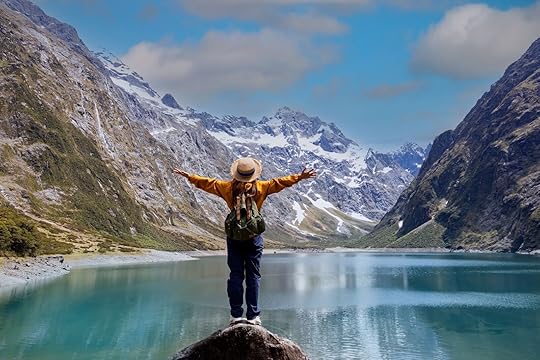
Safety and acceptance are paramount for LGBTQ+ travelers when choosing a vacation destination. There are plenty of rainbow-waving gay-friendly countries and sadly many that are not as welcoming. To help plan safe travel, the Gay Travel Index 2024, by Spartacus, publishes an annual ranked list of countries to help us better understand the legal and social climate around the world.
The index employs a meticulous methodology. The ranking assigns points based on a variety of criteria, with positive points awarded for factors like legal protections for LGBTQ+ people, such as anti-discrimination laws and same-sex marriage rights. Points are also given for factors that create a welcoming environment, like open displays of LGBTQ+ culture and a vibrant LGBTQ+ nightlife scene. Conversely, points are deducted for negative aspects like laws that criminalize homosexuality, restrictions on HIV-positive travelers, and strong religious influence that can be hostile to LGBTQ+ rights. Spartacus’ scoring system creates a comprehensive picture of LGBTQ+ experiences in each location.
This year, the top spot is a historic tie. Canada, Malta, New Zealand, Portugal, and Spain all share first place with a perfect score of 12 points. These countries are home to comprehensive legal protections, vibrant LGBTQ+ communities, and a general atmosphere of acceptance.
Switzerland and Australia follow closely behind at number six and seven, respectively. Denmark, Germany, Iceland, Norway, and Uruguay round out the top ten.
The index’s findings have a significant impact on countries’ policies and human rights. It highlights countries making strides towards inclusivity, like Estonia, which jumped from 47th to 32nd place due to the legalization of same-sex marriage.
It also identifies areas needing improvement, urging countries with lower scores to enact reforms that create a safer and more welcoming environment for all. Several countries, including Afghanistan, Chechnya (a region within Russia), Iran, and Saudi Arabia, are at the bottom of the index with a score of -21 points. Their low score reflects a multitude of factors that create a dangerous and hostile environment for LGBTQ+ individuals.
The US gets a separate ranking system, allowing travelers to make informed choices within the country due to significant legal and social variations across the 50 states.
This year, New York takes first place with a score of 14. California, Colorado, Nevada, and Oregon are joint second with 13. Washington and Washington DC take third with 12 points. The last two ranked states are Montana with -5 and Oklahoma with -6. 
where to see the Northern Lights
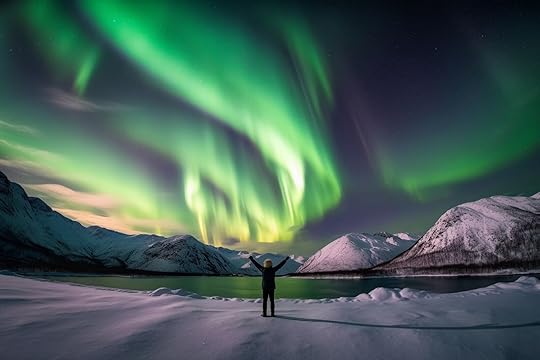
There are plenty of high-latitude destinations within the Aurora Oval where you can almost be guaranteed a spectacle of the aurora borealis. The area encircles the Earth’s magnetic north pole, including Iceland, Norway, Finnish Lapland, and Greenland. As many would love to experience the northern lights, astro-tourism is booming. Hotels are on-trend with night sky activities for guest but if you’d like to spend an unforgettable night under the dancing lights, you can do so independently at an Airbnb rental. Here’s where to see the lights in the Northern Hemisphere and some suggestions on where to stay.
We hope you love the Airbnbs we recommend! Just so you know, Matador may collect a small commission from the links on this page if you decide to book a stay. Listed prices are accurate as of the time of publication.
Denali National Park, Alaska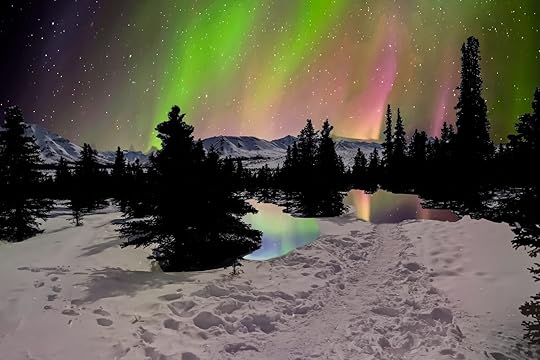
Photo: Susan Lotter/Shutterstock
Mount Denali sits at a high latitude, placing it directly beneath the auroral oval. But one of the most significant factors for viewing success is Denali’s minimal light pollution. Unlike populated areas, the vast expanse of Denali National Park keeps artificial light to a minimum, allowing the subtle brilliance of the aurora to be visible. This also means that on a clear night, stargazers can expect an exceptional view of the Milky Way and countless stars invisible to most of the world.
Where to stay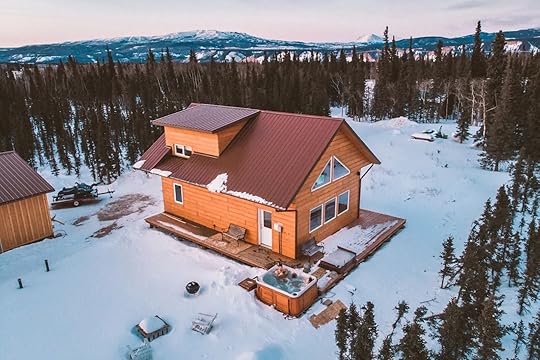 Photo: Airbnb
Photo: Airbnb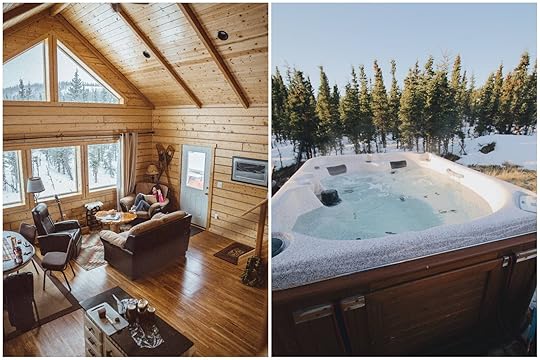 Photo: Airbnb
Photo: Airbnb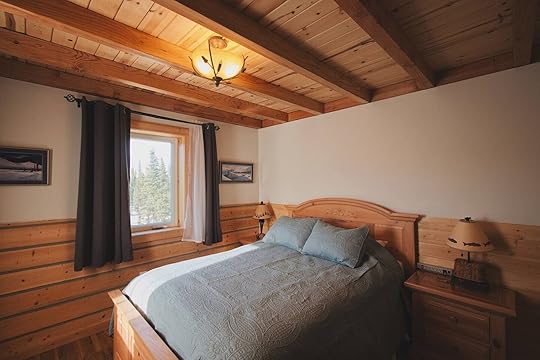 Photo: AirbnbSee more photos
Photo: AirbnbSee more photosAlaska has some of the coolest cabins and wilderness lodges Airbnbs in the US, and you’re spoilt for choice near Denali. For example, this Douglas fir log cabin photographed above has three bedrooms, a hot tub, and was lovely built by hand. It’s located 10 minutes from the park entrance. Or opt for a water side property like this 75 private acre lodge or this charming rustic homestead just 24 miles north of the park.
Jukkasjärvi, Sweden
Photo: lanfear/Shutterstock
Jukkasjärvi, in Swedish Lapland, is home to some of the best conditions for seeing the lights in the region. The small village’s name originates from the Sami language, translating to “meeting place by the water,” which is fitting considering the village’s historical significance as a trading post for the Sami people. Surrounded by wilderness, Jukkasjärvi offers an unobstructed view of the night sky. To maximize your chances of witnessing the phenomenon, plan your visit during the auroral season, which stretches from September to March.
Where to stay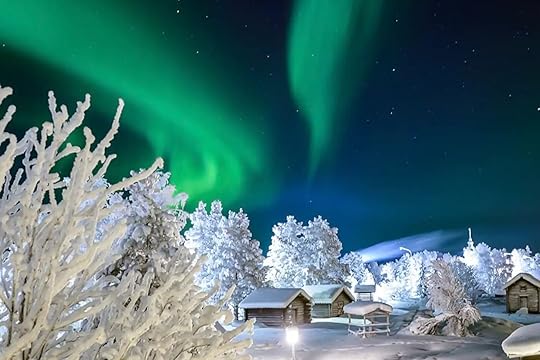 Photo: Airbnb
Photo: Airbnb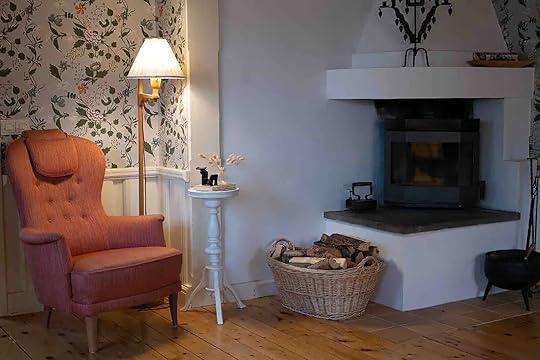 Photo: Airbnb
Photo: Airbnb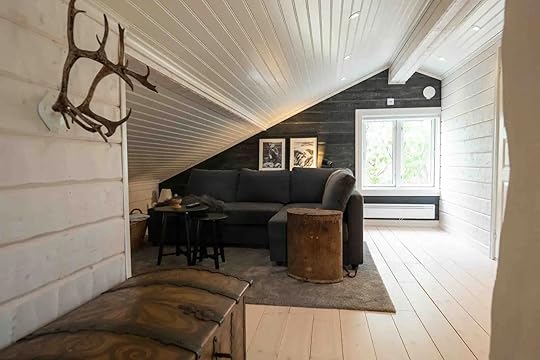 Photo: Airbnb
Photo: Airbnb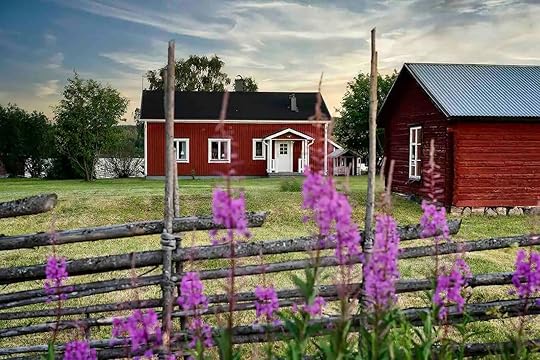 Photo: AirbnbSee more photos
Photo: AirbnbSee more photosJukkasjärvi is famous for the Icehotel, a one-of-a-kind hotel entirely built from ice and snow. Each year, the hotel is meticulously reconstructed by artists from around the world, transforming it into a spectacular work of art. You can stay in one of the ice suites or opt for a more local experience by booking a nearby Airbnb and enjoy the hotel’s bar or restaurant. There are some superb rentals nearby. This three-bedroom house (pictured) is five minutes from the iconic hotel and has its own sauna. If you’re traveling solo or with a partner, consider something a little smaller, like this cone-shaped tiny house made of glass. Here, you can sleep under the stars and watch the lights from the comfort of your bed.
Lapland, Finland
Photo: Jose Manuel Perez/Shutterstock
Lapland’s long stretches of darkness during the winter months (from late September to March) coincide with peak auroral activity. The region is also home to vast, open landscapes — sprawling lakes, frosted forests, and snow-capped mountains — providing an ideal backdrop. While sightings aren’t guaranteed anywhere, a stay in Lapland significantly increases your chances.
Where to stay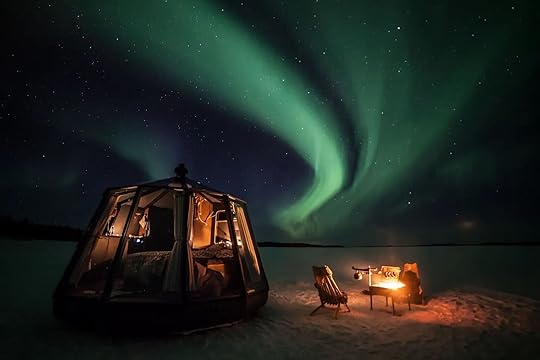 Photo: Airbnb
Photo: Airbnb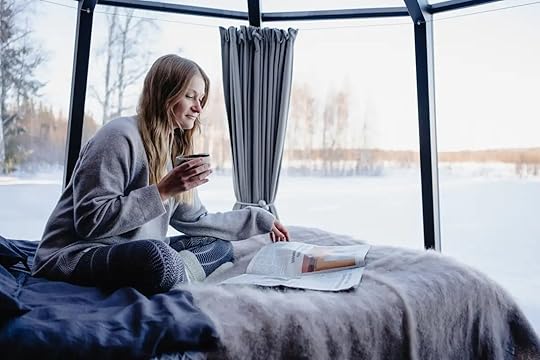 Photo: Airbnb
Photo: Airbnb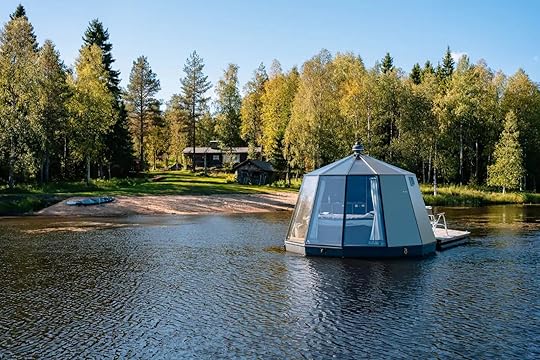 Photo: AirbnbSee more photos
Photo: AirbnbSee more photosYou’re spoilt for choice with accommodation in Finland, with options as spectacular as the region’s landscape. There are posh igloo hotels, luxury ranches, and world-class spas. But if you’d prefer a home base with access to a kitchen, there’s plenty of Airbnbs, too. This eco-lodge is one of the more special stays. The environmentally friendly cottage retreat is the perfect place to enjoy the lights, and you can do so from the one-room glass igloo. Or if you’d prefer something even more remote, check out this cabin in the Kaldoaivi Wilderness area. And for an opulent rental, bookmark this stunning glass-ceiling apartment.
Reykjavik, Iceland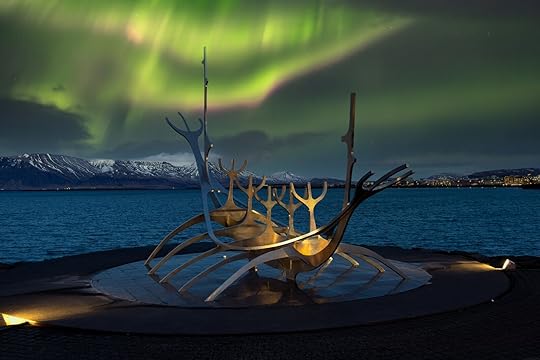
Photo: Oxanaso/Shutterstock
If you find yourself in Reykjavik this northern lights season, be sure to take bus #11 to Lindargotu Road. Once there you will spy Grotta Lighthouse barely connected to the mainland via a causeway footpath. It may not be the fanciest northern lights viewpoint in the world, but there is beauty in understatement. If you get a chill out on the peninsula, there is a single, lonesome hot spring by the beach just big enough for a foot bath on the way home.
Where to stay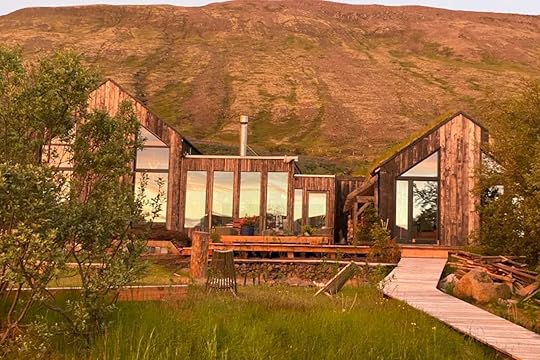 Photo: Airbnb
Photo: Airbnb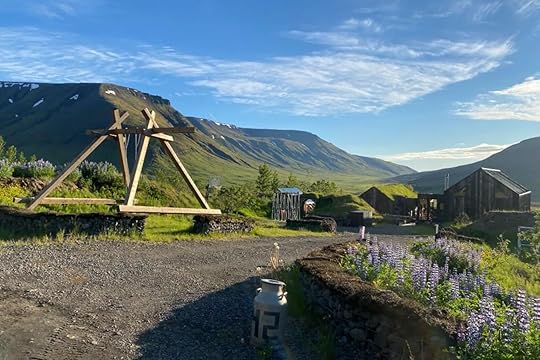 Photo: Airbnb
Photo: Airbnb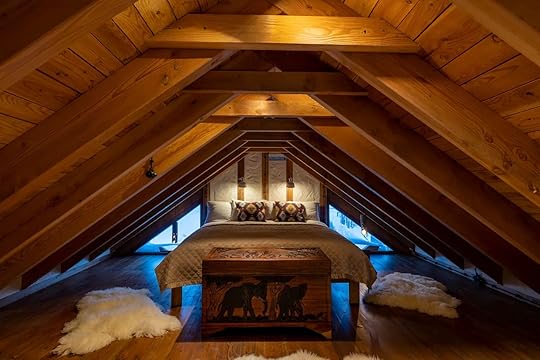 Photo: Airbnb
Photo: Airbnb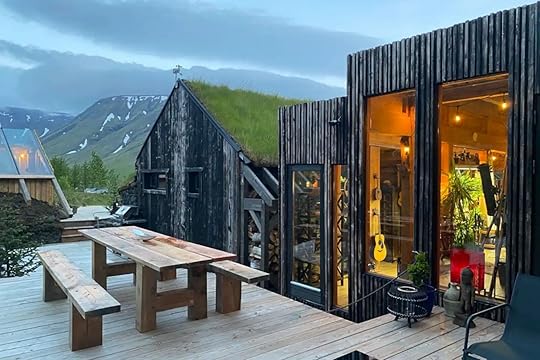 Photo: AirbnbSee more photos
Photo: AirbnbSee more photosAirbnbs in Reykjavik can make a pricy vacation to Iceland doable. You’ll save a lot of money on eating out with access to a kitchen, and the nightly rates are pretty reasonable. Stay in the city if you’d like to be close to amenities. If you need space, this six-bedroom house in downtown Reykjavik is reasonably priced if you share it with a group of adults. Or, head out of the city for rentals with even more space, especially outdoors, and extra amenities like hot tubs. This mountain lodge, pictured above, is around 50 minutes from the capital and cheaper than the city home. It sleeps 10 guests and offers breathtaking views of the surrounding mountains and easy access to hiking trails.
Whitehorse, Yukon, Canada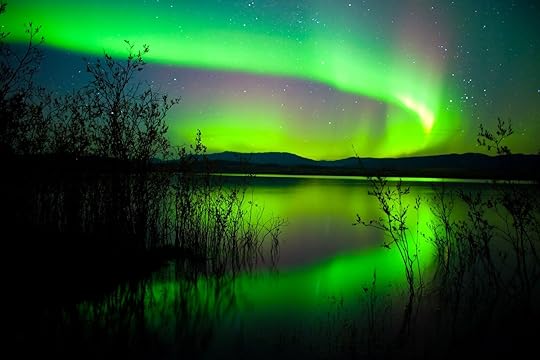
Photo: Pi-Lens/Shutterstock
The capital and largest city in Yukon is just a small town by most standards, but it punches over its weight when it comes to accommodations for northern lights hunters. Whitehorse has a big backyard, offering visitors a chance to experience the beauty of the Yukon while still having access to urban amenities.
Where to stay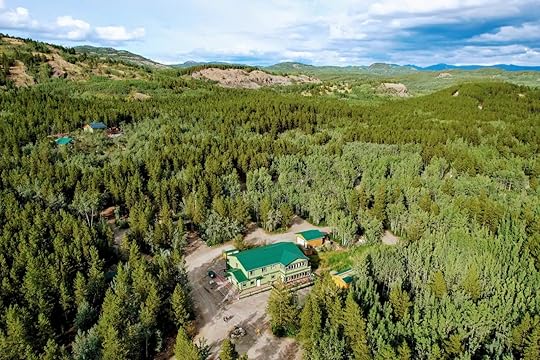 Photo: Airbnb
Photo: Airbnb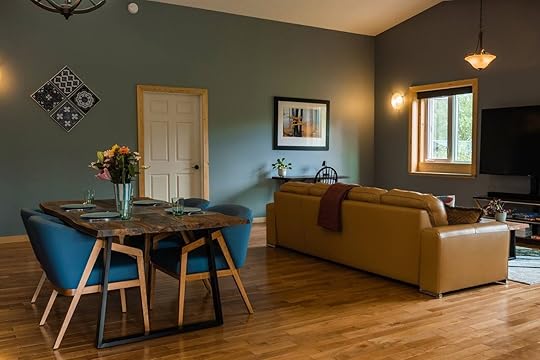 Photo: Airbnb
Photo: Airbnb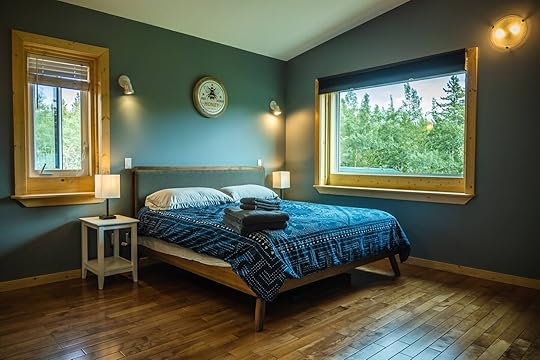 Photo: Airbnb
Photo: Airbnb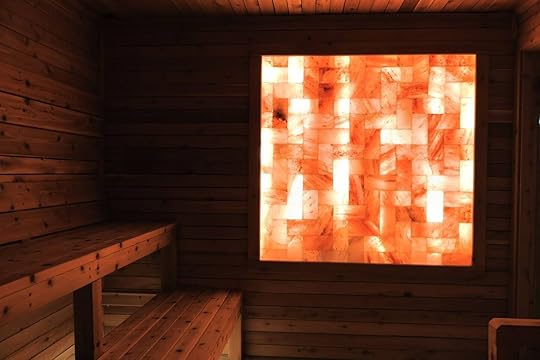 Photo: AirbnbSee more photos
Photo: AirbnbSee more photosUnlike cookie-cutter hotels, Airbnbs in Whitehorse can be anything from cozy cabins to historic lofts, providing a more memorable experience. You can find places with balconies overlooking the Yukon River, properties with hot tubs and hot spring access perfect for viewing the aurora borealis, or rustic cabins on the city’s outskirts.
Ice Cap, Kangerlussuaq, Greenland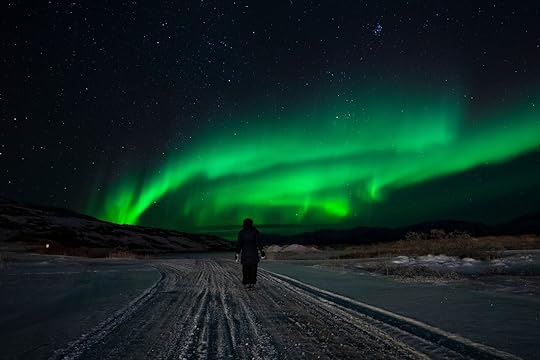
Photo: Dan Bach Kristensen/Shutterstock
Thanks to 300-plus days of sun a year, the Ice Cap of Kangerlussuaq, or “Big Fjord”, is the stage for so many epic northern lights shows that locals occasionally forget that the phenomenon doesn’t happen everywhere in the Northern Hemisphere. Thanks to an international airport that serves the tiny nearby town, this is also one of the most accessible northern lights viewing destinations in Greenland.
Where to stay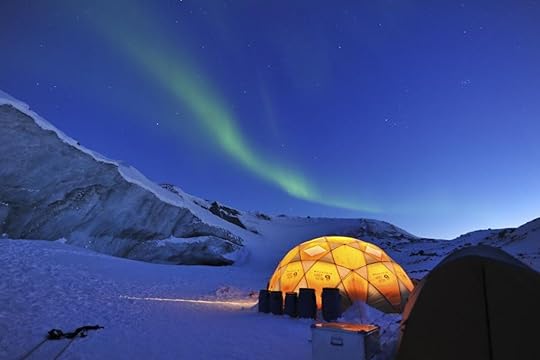
Photo: Albatros Arctic Circle
See more photosBecause Kangerlussuaq is remote, you should opt for a guided tour. One of the best is Camp Ice Cap, an overnight adventure offered by Albatros Arctic Circle. This program allows you to spend a night on the vast Greenland Ice Sheet, an experience typically reserved for scientists and seasoned adventurers. Albatros Arctic Circle provides all the necessary camping equipment and expertise to ensure a safe and comfortable stay. You will spend the night in a tent, surrounded by the vast expanse of white and under the open Arctic sky.
Orkney, Scotland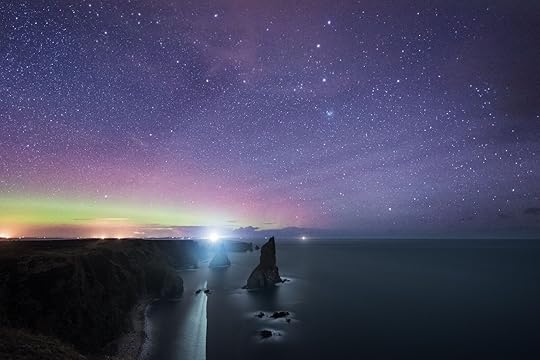
Photo: Ollie Taylor/Shutterstock
This tiny island can be found at the northernmost edge of Scotland. While there are plenty of B&Bs and hotels on the adjacent Orkney Mainland, the only signs of humans on the Brough are the archaeological remnants of the Picts, Norsemen, and Christian missionaries who lived here as early as the 7th century. Not a bad place to experience the mysticism of the northern lights, which the Norsemen believed to be the glint of the armor of the Valkyries.
Where to stay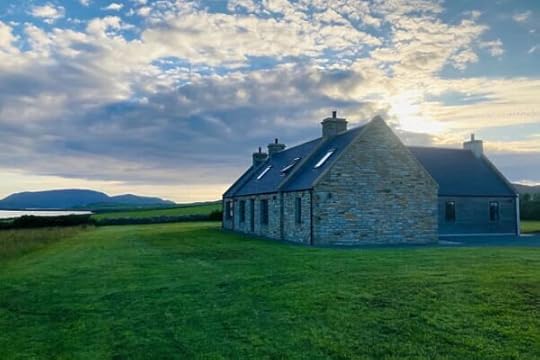
Photo: Airbnb
See more photosAirbnbs are peppered across the island, from Kirkwall’s town center to cozy cottages on the coast. Many Orkney Airbnbs are converted farmhouses, fisherman’s crofts, or modern Scandinavian-style apartments with a touch of Orkney charm. This cottage conversion (pictured) sits between Kirkwall and Stromness and offers spectacular views overlooking Scapa out towards Flotta and the Hoy Hills.
Alta, Norway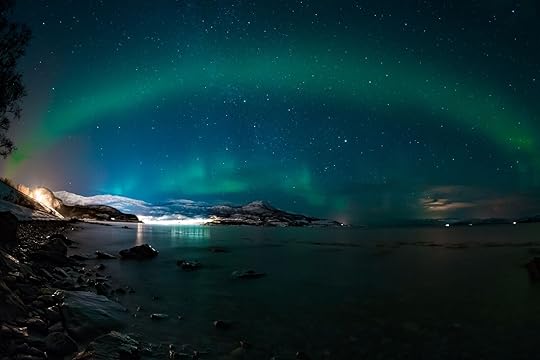
Photo: Andy Troy/Shutterstock
Alta, Norway, nicknamed “The City of the Northern Lights,” has exceptional conditions. Owing to its position above the Arctic Circle, Alta experiences extended periods of darkness during winter months, a prerequisite for viewing the auroras. The absence of sunlight creates a perfect canvas for the colorful light show, and the auroras are visible for up to 200 nights a year.
Where to stay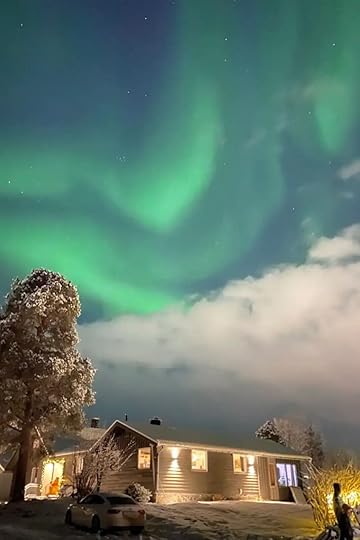
Photo: Airbnb
If you’d prefer a hotel, the Sorrisniva Igloo Hotel is a must-stay for anyone visiting Alta in the winter. Built entirely of ice and snow, a stay here promises a real arctic experience. However, it can be on the pricier side. If you’d rather have an affordable and comfortable stay, check out this newly renovated modern four-bedroom home or this penthouse apartment with a terrace, jacuzzi, and ocean view. 
May 13, 2024
Cruise Lines Are Taking Infantilizing Measures to Keep Us Healthy Because We Are so Bad at Basic Hygiene

You’d think that full-grown adults with enough money and sense to book a cruise vacation would have the most basic personal hygiene down pat, but they don’t. Washing your hands after using the bathroom, after blowing your nose, after sneezing, and before a meal might seem like such obvious recommendations that they don’t need repeating, but cruisers, much like kindergarten-level children, need to be reminded of them again and again — often, in vain.
Because no matter how many signs urge cruisers to wash their hands, how many hand sanitizer dispensers, sinks, and high-tech hand-drying machines there are on cruise ships, a lot of passengers wilfully ignore them. Whether those people think they are invincible, or whether they are just plain stupid remains to be be determined, but the fact of the matter is that they are the ones responsible for the outbreaks of gastrointestinal viruses that give cruise ships their undeserved petri dish reputation. (According to CLIA, the Cruise Lines International Association, one is much more likely to contract norovirus in a healthcare facility or a restaurant than a cruise ship.)
As a matter of fact, cruise lines try very hard to keep viruses at bay. After the COVID-19 pandemic, most of them permanently switched from self-served food stations at buffets to crew-staffed stations. They also installed glass or plastic barriers around food stations to avoid any contamination. And if you’ve ever been on a cruise, you know that the crew is constantly cleaning high-touch public areas, sanitizing railings, handles, and toilets. But without the participation of the passengers, cruise lines and their employees can only achieve so much in their fight against viruses.
One cruise line who is going one step further in its attempt to involve its passengers in limiting the spread of diseases on its ships is Royal Caribbean. For the past 15 years, a character called Washy Washy, impersonated by various crew members, stands in front of food venues on Royal Caribbean ships and sings the virtues of washing one’s hands. Sometimes Washy Washy offers passengers a little spritz of hand sanitizer, sometimes they direct the guests towards the nearby sinks and encourage them to scrub up before they eat. Mr. or Miss Washy Washy often punctuates their singing with some dance moves, attracting attention and hopefully reminding cruisers of the importance of basic hygiene.
@allison0777 He rly did make us happy happy. For 7 days all we heard was “washy washy” from everyone walking by us. #fyp #washywashy #happy #twerk #vacation #icon #cruise #norwegian #norwegiancruise #norwegianencore #queen #viral ♬ original sound – Allison
While incredibly infantilizing, Royal Caribbean guests seem to enjoy the Washy Washy character. There’s an entire conversation dedicated to Washy Washy on the unofficial Royal Caribbean SubReddit where people gush about their experience with Washy Washy.
“Miss Washy Washy on Voyager was a highlight. Everyone was getting pictures with her at the end of the voyage. Well done RCCL,” says a Redditter. Others say, “The one we had on Liberty last July was next level. She had glasses and headwear for each day that coordinated. Also a very loud speaker she chose the music. Family loved it!” and “We loved the Washy Washy song on Wonder :)”
According to the CDC’s records, Royal Caribbean has had to deal with as many gastrointestinal illness outbreaks as other cruise lines in the past months and years, so it’s unclear if Washy Washy has any impact on actually limiting the spread of virus on board Royal Caribbean cruise ships, but it’s worth a try. Also, it’s hilarious.
It’s hard to believe that after the COVID-19 crisis we still need to remind people of the most basic hygiene steps they need to take to stay healthy and protect others but, sadly, the reality seems to be that many have forgotten all about the good habits they had taken up back in 2020 and 2021.
I was on a 12-day transatlantic cruise in December and I was alarmed by the number of passengers who coughed and sneezed without covering their mouth. The same went for those who blew their nose and never washed their hands afterwards. I caught COVID-19 towards the end of the voyage and I am still mad at the old lady who, selfishly, passed it on to me.
After all, according to the CDC, hand washing can reduce the risk of respiratory illnesses, like colds, in the general population by 16 to 21 percent, and research shows that washing hands with soap and water could reduce deaths from diarrheal disease (like the norovirus) by up to 50 percent.
Colds and gastrointestinal diseases may seem harmless, but they can be dangerous for a lot of people, and they can certainly ruin your vacation, so why take a chance with your health and that of others when you’re cruising? Just wash your hands regularly and you’re more likely to have an enjoyable cruise, free of snot and diarrhea. Reducing disease outbreaks on cruise ships is all up to. 
This Cannabis Farm Tour Shows First-Hand What Makes Jamaican Weed so Special

It’s easy to find quality cannabis in Jamaica. That said, it’s also easy to be duped into buying subpar weed from one of the many hawkers targeting tourists in resort towns. Yet what connoisseurs and the general cannabis curious public can trust on first sight is a brand that opens the door to tourists and locals alike to see where it’s all grown.
Cannabis, despite the strong cultural ties, is not legal in Jamaica. There’s a medical cannabis system in Jamaica, however, and possession of small amounts was decriminalized in 2015.
On a recent trip to the island, I walked through Ocho Rios and met some entrepreneurial business owners with a side hustle of selling Jamaica’s most famous crop. Some were transparent about their product, others left the details a little hazy. All were more than happy to talk at length about Jamaican cannabis beyond the stereotypes. The next day, I took an even deeper dive into Jamaica’s cannabis culture by getting out to the countryside with Jacana to see a working cannabis farm.

Photo: Jacana
Jacana started in 2018. There are Jacana dispensaries in Ocho Rios, Kingston, and New Kingston, as well as more than 70 distribution partners that sell Jacana products. The brand exports medical cannabis to Europe, and in the United States, the CBD-based Jacana Wellness brand is available in parts of the country.
“We wanted to make a space where people can come in here and know that they can find something specific they’re looking for,” Jack Smith, who cofounded Jacana with his wife Alexandra Chong, said as we walked through the Ocho Rios dispensary. “But also a space for the curious to feel comfortable just walking in and learning more about what they want.”
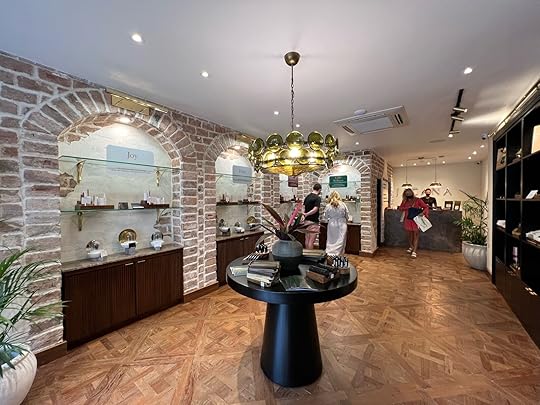
Jacana’s Ocho Rios dispensary. Photo: Jacana
Chong grew up in Ocho Rios, and the couple put a strong emphasis on making Jacana a Jamaican company through and through. The Ocho Rios shop has reclaimed bricks from Kingston. On the packaging, “Product of Jamaica” sits right under the Jacana brand name.

Jacana cofounder Alexandra Chong. Photo: Jacana
“Internationally, there’s a race for who is going to become a cannabis destination,” Smith said. “One of the reasons why my wife and I started Jacana is because with the world opening up to cannabis, it would be a travesty if Jamaica got left behind. There’s Cali weed and Moroccan hash — we’re making sure that Jamaica has a spot on the international podium.”
That starts at home with letting tourists experience and learn about the country’s cannabis first-hand. The dispensaries are welcoming, and Jacana has limited-run partnerships for products with other local businesses, like Pure Chocolate Company next door to Jacana’s Ocho Rios location. On 4/20, Jacana held a cannabis festival in the center of the Island Village shopping area.
The best way to get a feel for what makes cannabis on the island so special, however, is to go out to Jacana’s farm.
Outdoor cannabis farming takes center stage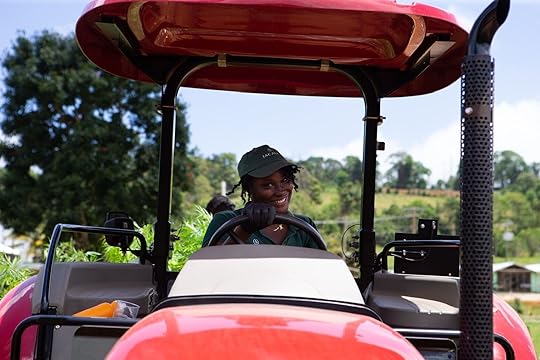
Photo: Jacana
The driving force behind Jacana is the farm itself, and it’s open to visitors for local-led tours that go as deep on the plant as people are looking to go.
The $80 premium tour walks through the full cannabis life cycle highlighted on various areas of the farm, followed by a lunch, spliff rolling experience, and tour of Jacana’s dispensary in Ocho Rios. The $120 exclusive tour adds in a section on Jacana’s cannabis lab and manufacturing facility, while private tours (price on request) make for a more intimate exclusive tour experience.
The tours are about five hours long when accounting for transportation to and from the farm, with pick up and drop offs at and around Ocho Rios accommodations. It’s intimate with a maximum of 10 people on each tour, and everyone must be 18 years or older.
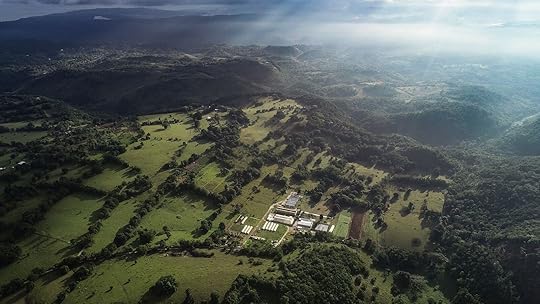
Photo: Jacana
The 100-acre farm is in the mountains of St. Ann Parish, nestled in a wider 2,000 acre property. Jacana’s farm sits on what was once an organic farm, and it’s certified organic to this day. Chong met with three generations of the family who owns the wider property to pitch them on dedicating part of their farm to cannabis. It worked, and Jacana now has a 100 year lease on the 100 acres.
Cannabis grows on only a small part of the property. A nursery and a 10,000-square-foot processing facility that can handle everything from flower to extracts are on-site. The welcome center with a small shop is attached to a covered patio. There’s also a food and herb garden that’s tapped for worker meals and the tour lunch.
“We have our own testing facility, so we know what’s in it and what’s not” — Jack SmithOn the drive to the farm along a bumpy rural road, Smith wistfully talked about the importance of place. Terroir — a French word mostly used for wine that broadly means the environmental and cultural factors that make a certain region’s products unique — is near and dear to Jacana as a Jamaica-first brand.
Indoor cannabis is going to be similar no matter where it’s grown. Indoor cannabis from Jamaica won’t be all that different than that from one of the many legal areas of the United States where indoor cannabis is grown. There’s a time and a place for indoor cannabis, but presumably connoisseurs traveling to Jamaica wouldn’t want what they could get elsewhere, just like people who travel for food wouldn’t want to eat at an American fast food chain for every meal while they travel.

Photo: Jacana
The debate over whether indoor or outdoor grown cannabis is superior is never ending. The science behind the differences is lacking, and strict cannabis laws have kept away most serious research. Ask a regular consumer, however, and there’s typically a preference. For some, the more dense flower and heavily controlled buds from indoor grows is preferred. Others, including myself, prefer things more natural. That’s where one can get a better sense of why location matters. Again, replicable, high-quality studies are lacking for any type of scientific proof. Yet it seems intuitive that conditions unique to a certain place produce location-specific cannabis.
Smith believes it’s not hard to imagine cannabis sold in a way similar to wine in the future, where ganja gets a Jamaican designation in the way that Champagne can only come from the Champagne region of France. But for Jamaica’s product to stand out from the masses of indoor cannabis, it first must lean into the natural and cultural aspects that Jamaica provides. That means leaning into sun-grown plants on outdoor farms — and being transparent for those who want to see it themselves.
Experiencing a Jamaica cannabis farm with Jacana
Photo: Jacana
The tours are customized to the level of knowledge the guests have, and tours can get as deep or as surface level as needed. Either way, it’s an experience you can’t easily find elsewhere.
A middle aged couple from North Carolina joined me on my tour. They were staying at a Sandals resort in Jamaica and had booked the tour through the resort as soon as they started planning their vacation.
Our guide, Khalil, started us at a small plot near the welcome center. Jacana is regulated and licensed by the government. As such, you can’t touch the plants that make it to dispensary shelves. At the entry plot, guests can walk among the plants, touch them, pick a leaf, and take all the pictures they want.

Photo: Nickolaus Hines
Before we reached the main cannabis farm, we passed the vegetable and herb garden. Khalil walked us through rows of mint, rosemary, okra, papaya, Scotch bonnet peppers, and other plants. There are also medicinal herbs used in traditional Jamaican cooking and remedies like leaf of life, guinea hen weed, sour sop, and ram goat dashalong.
Then came the cannabis. What guests see on the farm tour depends on what’s growing at the time and what stage the plants are at. It takes about four months, depending on the strain, to go from young plant to harvest. Jacana has the space and capacity to do a harvest every two weeks and start new plants every two weeks. Other than a few internationally known strains that are always in high demand, Jacana grows an ever-changing set of plants that thrive in the Jamaican climate.
Khalil took us through the section for international distribution before reaching Jacana’s mother plants (those kept in a stage of life where clones can be cut to continue the same genetic line). A safe room nearby is used to protect these mother plants during hurricanes and inclement weather. An area for young plants still getting their roots leads to adolescents being acclimated under a greenhouse tarp. Next to one of the labs, a few rows of experimental varieties grow in a straight line.

Photo: Jacana
Jacana’s commitment to sustainability touches every part of the tour. As an organic certified farm, natural methods of pest control replace harmful pesticides. Sunflowers at the entrance to the flowering area keep pollinators preoccupied, for example, and water comes from the nearby White River. Coconut husks naturally filter the soil and help prevent root rot.
“Outdoor, the plant gets to be itself,” Khalil said while pointing to two plots, each with a different strain, that have plants of the same age that have different visible characteristics. “Indoor, the focus is on THC potency.”
The walking works up an appetite. At the conclusion, there’s a farm-to-table lunch (either vegan or with meat) that uses ingredients from the Jacana garden. Curry chickpeas, rice and peas, barbecue chicken, and salad were on the menu when I visited.
After lunch, we moved one table over where Jacana-branded rolling trays, wrapping papers, a grinder, a lighter, and, of course, cannabis were set up at each seat. It’s the part of the tour my companions were most looking forward to. It’s not often one gets to roll and smoke with a local expert while sitting in the middle of a cannabis farm, after all.
Here, we had our spliff rolling class. The word spliff started in Jamaica and has been misconstrued internationally as a mix of cannabis and tobacco, Khalil explained. In Jamaica, it’s the primary consumption method: a long wrapping paper that’s filled with cannabis and rolled into a cone shape with no filter and, importantly, no tobacco.
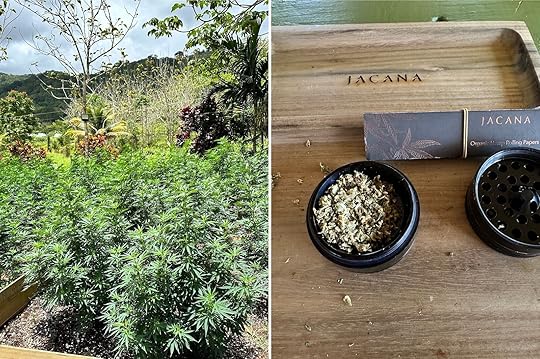
Photo: Nickolaus Hines
Khalil walked us through each step. Anyone familiar with rolling a joint knows the basics, but it’s best to not get ahead of yourself if you’re new to rolling a traditional Jamaican spliff.
“We like things fresh in Jamaica,” Khalil said when I noted that the flower is much less dry than what I’m used to back home in Colorado. The terpenes are strong with a grassy, floral, citrus aroma as I popped open the grinder filled with newly ground cannabis. Khalil showed how to fill the wrapping paper and arrange it just right to create the classic cone. Shaped, sealed, and twisted at the top, the spliff is quickly ready. Each person smoked their own as we talked with Khalil about life, politics, and cannabis before walking back to the tour provider cars to head back to our respective hotels.
How to see Jacana’s farm for yourself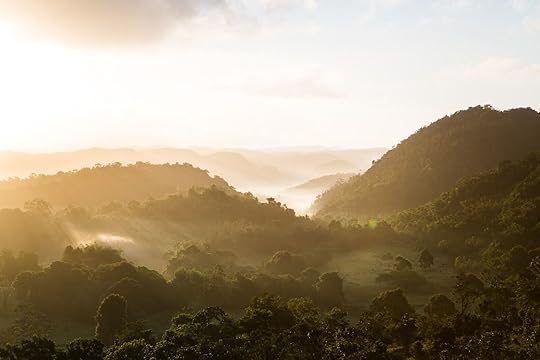
Photo: Jacana
The Jacana team can be reached for tours directly through the company’s website. Vans take guests to the farm and back. If you’re staying in Ocho Rios, Kingston, or New Kingston, make it a point to visit a Jacana dispensary to learn more about the brand and what tours are on offer. 
This Island Country Famous for Nature and Diving Is Now Nearly Impossible to Reach

Most of the islands the South Pacific are a bit difficult to reach, or at least require some lengthy flights and multiple connections from the US West Coast. But one small island famous for its scuba diving, rainforests, and untouched landscapes just got a lot harder to reach, as its national airline abruptly shut down.
Earlier this month, Vanuatu’s Air Vanuatu was completely grounded. That means it cancelled all flights throughout the country, making it difficult for people who live on the country’s 83 islands to get home. But it also left many tourists and travelers completely stranded. Some visitors reported being sold airline tickets for domestic flights throughout the country, only to arrive and find out the route hadn’t been flying for weeks. Passengers trying to leave the country spent days in hotels and airports, with many resorting to chartering private flights to get home.
On the Instagram page for Air Vanuatu, commenters covered recent posts in complaints. “Don’t trust this airline. Find another way to beautiful Vanuatu. They cancel your flights and never return your money! My flights were cancelled in April. They have repeatedly promised a refund, but here I am, still with no refund,” wrote one user. Another made it clear what the airline closure means for the country: “Avoid this airline at all costs. Which means just go to another country unfortunately!!!”
View this post on Instagram
A post shared by Air Vanuatu (@airvanuatu)
The airline was put into “voluntary liquidation” by the government on May 9. Essentially, that means the government grounded the airline because it isn’t able to turn a profit and/or isn’t able to go forward financially (for example, by carrying too much debt). The government announced that some assets may be sold to other airlines, the entire airline could be sold, or it may partner with another airline. The company responsible for managing the liquidation process made statements suggesting it intends to get the airline in the air again in some capacity, but didn’t provide any type of timeline or schedule for doing so.
Usually, it’s not a big deal if a small airline goes out of business. While it may mean some passengers have to book new flights home, that’s usually not hard to do. But Vanuatu, like many of the smaller islands of the South Pacific, doesn’t have a lot of alternate methods of travel or alternate airlines. Air Vanuatu was the only airline that served many of the country’s smaller airports, including Santo International Airport (arrival airport for the popular Espiritu Santo area) and Tanna/Whitegrass Airport, used by many scuba divers.
How to travel to Vanuatu without Air VanuatuNow, travelers hoping to reach other islands of Vanuatu (pronounced vah-noo-ahh-too) will either need to wait until air service resumes again, or use the country’s inter-island ferry system. However, it only reaches a few main destinations. And you’ll need to have a lot of flexibility in your schedule, as most ferry tickets can only be purchased at various wharfs and piers. Options include the “Big Sista” ferry, Vanuatu Ferries, or Silent World Shipping (a cargo ship that also carries passengers). You may also be able to book charters with local private airlines Unity Airlines or Air Taxi Vanuatu.
Regardless of whether you take a ferry or local charter, you’ll need to be very flexible on scheduling, as weather and strong waves can significantly delay or cancel planned trips. And with Air Vanuatu grounded, there’s likely to be a lot of demand between visitors and locals for the remaining seats.
Fortunately, though Air Vanuatu isn’t flying, there are still other airlines that can get you to the main airport in Port Vila — but the options are now fairly limited. Solomon Airlines operates one flight per week from Honiara, Soloman Islands; and Aircali flies three times per week from Noumea, New Caledonia. Fiji Airways has four flights per week from Nadi. But the biggest airline now serving Vanuatu is Virgin Australia, which offers a few direct flights per week from Brisbane only.
If you have a trip planned, it’s best to contact your hotel and see what it can arrange. If you don’t have a trip planned, it may be best to wait until Air Vanuatu resolves its issues.
Why go to Vanuatu
Photo: Defrancais Istvan/Shutterstock
A large percentage of Vanuatu’s economy depends on tourism, and pre-COVID-19, it was seeing close to 300,000 visitors per year. Despite the current hassle of getting to Vanuatu, it’s worth keeping on your travel radar. Here’s why.
Scuba diving: Vanuatu’s underwater realm is one of the most appealing in the world to divers. Novice divers can explore the calm waters of Hideaway Island Marine Reserve, while experienced enthusiasts will have plenty of options for wrecks of World War II ships, encrusted with marine life. It’s also one of the best place to see endangered dugongs in the wild. There’s even an underwater post office.Nature and outdoor adventure: Vanuatu’s interiors have lush rainforests, cascading waterfalls, and hidden swimming holes. Options for outdoor activities include trek through dense foliage, exotic birding, trips to swim in hidden waterfalls, or kayaking tours through lagoons.Blue holes and beaches: Vanuatu’s tropical landscapes are somewhat unique in that they’re filled with blue holes. And and many people visit the island to swim, paddle, and play in the freshwater reservoirs. Not surprisingly, Vanuatu also has stunning beaches mostly free from over-tourism, including black sand beaches near the foot of the country’s several volcanoes. More like thisTravelHow to Get to the World's Most Remote Inhabited Island
More like thisTravelHow to Get to the World's Most Remote Inhabited Island
2 Italian Airports Will Scan Travelers’ Faces Instead of Requiring a Passport

While you can’t ditch your passport just yet, advances in facial recognition technology are slowly but surely making physical identity documents obsolete. Case in point: Two Italian airports, Milan Linate and Catania airports, are currently trialing FaceBoarding, a facial recognition system that allows travelers to go through security checkpoints without having to show their passport or identity card or their boarding pass.
FaceBoarding is a straight-forward process. After checking in for their flights, whether online or at the check-in counter, travelers at these two airports can make their way to the FaceBoarding kiosk where they’ll be prompted to scan they identity document, their boarding pass, and their face. After doing so, those travelers will be able to breeze through dedicated lines for all the airport security checkpoints, never having to take out their passport of boarding pass again.
Well, almost. Unless they are flying with ITA or SAS, the only two airlines that have joined the FaceBoarding service so far, those same travelers will have to show their documents before boarding the aircraft.
Currently, travelers can register for FaceBoarding for just one flight or for the entire duration of the trial, i.e. until December 2025. They can do so at the FaceBoarding kiosk during the registration process. Note that air travelers can choose to go through the airport experience the old-fashioned way; there is no obligation to use FaceBoarding.
To make FaceBoarding even easier, an app is in the works, allowing travelers to register from home. The FaceBoarding app is scheduled to be operational in June 2024.
The goal of FaceBoarding is to reduce lines in airport and speed up the airport experience, but facial recognition technology, also known as biometric-based identification, can also improve security by limiting passport fraud.
Biometrics data are already used in airports and international train stations around the world to shorten immigration lines. By taking a photo of your face and matching it to the one on your passport, your identity is quickly and safely confirmed without the need for a border agent to check manually.
The introduction of facial recognition technology like FaceBoarding, while streamlining the process of going through security checkpoints, does not mean you can show up at the airport without your passport or identity card. For now, you still need to have your documents on your person while traveling — or you won’t be going anywhere. 
This YouTuber Tried Every Hotel in Disney World so You Can Book the Best One

Walt Disney World isn’t just a collection of epic theme parks; it’s a full-fledged vacation destination. There are over 20 different accommodations, and selecting a Disney World hotel that suits your needs will hugely elevate your entire Disney experience.
Are you a solo Disney fan seeking a clean and comfortable crash pad? Or a multi-generational family with varying interests? If you’re traveling with children who would be thrilled with a character dining experience, you might consider a deluxe resort. But with a vast array of options, from budget-friendly to outrageous, how do you pick the right one? To help you out, this YouTuber stayed at every hotel, from the cheapest room at Pop Century to the luxe Animal Kingdom.
Disney’s Pop Century ResortFor a budget-friendly stay (as “budget-friendly” as Disney can be,) opt for Pop Century. This resort features playful theming that celebrates iconic pop culture decades from the 1950s to the 1990s. The resort has large pool complexes with waterslides, on-site food courts, and live entertainment. Pop Century prioritizes affordability and fun, making it ideal for families or those seeking a more social Disney experience.
Disney’s Contemporary Resort Photo: Walt Disney World
Photo: Walt Disney World Photo: Walt Disney World
Photo: Walt Disney World Photo: Walt Disney World
Photo: Walt Disney WorldThis sleek, A-frame-shaped resort has a prime location directly across the Magic Kingdom park entrance. It’s one of the original three resorts of Disney World and is beloved for its location. From here, you can enjoy the convenience of walking to the park or hopping on the monorail that glides through the resort. The Contemporary offers modern rooms with Magic Kingdom views (in the central tower), award-winning dining experiences, and stunning pools. However, this luxury comes at a premium price tag.
Disney’s Animal Kingdom Lodge
Zebra Born at Disney’s Animal Kingdom Lodge. Photo: Walt Disney World
Animal Kingdom Lodge is simply magical. The horseshoe-shaped resort encloses several savannas teeming with over 200 species of African wildlife, including zebras, giraffes, gazelles, and even flamingos.
 Photo: Walt Disney World
Photo: Walt Disney World Photo: Walt Disney World
Photo: Walt Disney World Photo: Walt Disney World
Photo: Walt Disney WorldYou can observe animals throughout the park and from various vantage points within the resort, including the balconies of higher-end rooms. There are two pool complexes: Uzima Springs Pool, with its thrilling 67-foot waterslide, and Samawati Springs Pool. A stay here is a magical immersive experience but is on the pricier side.
Beyond these three resorts, Walt Disney World offers a vast collection of hotels catering to various themes, budgets, and experiences, so there’s something for every type of traveler. Here’s a current list of every Disney World hotel.
Disney’s All-Star Movies ResortDisney’s All-Star Music ResortDisney’s All-Star Sports ResortDisney’s Animal Kingdom LodgeDisney’s Art of Animation ResortDisney’s Beach Club ResortDisney’s BoardWalk InnDisney’s Caribbean Beach ResortDisney’s Contemporary ResortDisney’s Coronado Springs ResortDisney’s Grand Floridian ResortDisney’s Old Key West ResortDisney’s Polynesian Village ResortDisney’s Pop Century ResortDisney’s Port Orleans Resort — French QuarterDisney’s Port Orleans Resort — RiversideDisney’s Riviera ResortDisney’s Saratoga Springs ResortDisney’s Wilderness LodgeFort Wilderness ResortDisney’s Yacht Club ResortThere are three types of resorts at Disney World.
Stormalong Bay at Disney’s Yacht and Beach Club Resorts.
Photo: Walt Disney World
Disney World offers three main hotel categories for various budgets and travel styles. Value resorts provide basic accommodations with fun theming, like rooms decorated with favorite Disney movies, perfect for budget-minded families prioritizing park time over luxurious amenities. Moderate resorts step up the comfort level with slightly larger rooms, more dining options, and better facilities.

Bungalows at Disney’s Polynesian Villas and Bungalows. Photo: Walt Disney World
Deluxe resorts offer the most immersive experiences, elegant design, premium locations close to parks or with transportation options like the monorail mentioned above, and fine dining experiences.
How much does a Disney World hotel cost? Guest Rooms at Polynesian Village Resort.Photo: Walt Disney World
Guest Rooms at Polynesian Village Resort.Photo: Walt Disney World Photo: Walt Disney World
Photo: Walt Disney WorldDisney World hotel prices vary depending on the resort’s category, time of year, and room type. Value resorts like Pop Century are the most budget-friendly, with rates typically around $200 per night, while deluxe resorts can reach upwards of $6,000 per night. Moderate resorts fall somewhere in between, and villas offer multi-room layouts with kitchenettes or full kitchens. However, they come with a premium price tag, but of course, you save on eating out. 
The Most Gorgeous Airbnbs for Your Tulum Bachelorette Party

Tulum is probably the best location in Mexico for a bachelorette party for discerning brides. While some brides-to-be may appreciate the appeal of sitting at an all-inclusive resort in tourist hot spots like Cancun or Cabo San Lucas, surrounded by other Americans drinking bottomless piña coladas, brides with more refined tastes will instead want to consider a Tulum bachelorette party.
Tulum offers easy access to cenotes and cultural sites, affordable and homemade Mexican food, and is a perfect basecamp for exploring the Yucatán, especially since it’s easy to take cruiser bikes to the beach or nearby Tulum National Park. And if you book an Airbnb closer to Tulum Beach, you’ll be close to the hotel and restaurant strip, where you’ll find high-end restaurants, beachside yoga studios, and stylish beach clubs where the DJs start spinning at 11 am. Of course, Tulum also has a fantastic collection of street art and sculptures, boutique and artisan stores, and jungle cafes where you can start your morning off with an açaí bowl while swinging in a hammock under a palm tree.
If you want to inject a bit of style, culture, and adventure into your pre-nuptial celebration, consider any of the nine Airbnbs below for your epic Tulum bachelorette party.
Traveling to Tulum? Check out Matador’s accommodation guides to the area:Pablo Escobar’s Former Mansion Is Now a Luxury Hotel in Tulum, MexicoThis Mexico Hotel Has Hands-Down the Coolest Outdoor Bed in the WorldThe 8 Best Hotels in Tulum for Photo-Worthy Jungle VibesInside look: New Conrad Hilton Property Opens in TulumThese Top-Rated Tulum Airbnb Rentals Put You Right Near the BeachThis Stunning Tulum Cave Airbnb Has a Private Indoor Swim-Up Pool
We hope you love the spaces and stays we recommend! Just so you know, Matador may collect a small commission from the links on this page if you decide to book a stay. Listed prices are accurate as of the time of publication.
Rooms at Playa Esperanza Eco-Beach Club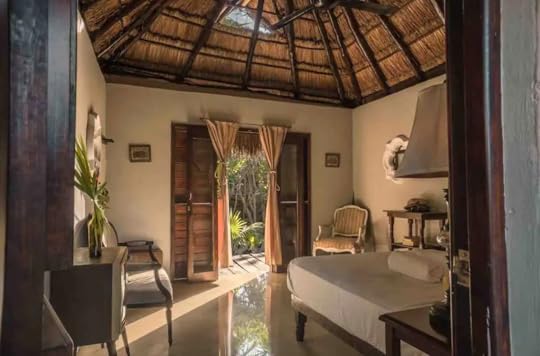 Photo: Airbnb
Photo: Airbnb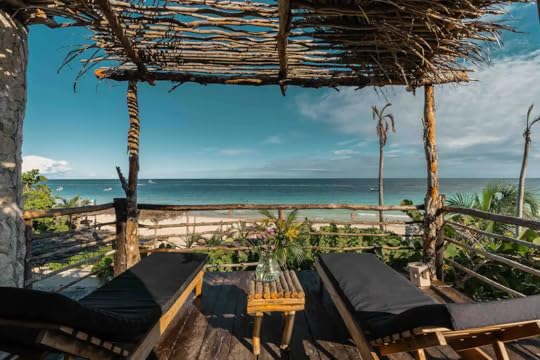 Photo: Airbnb
Photo: Airbnb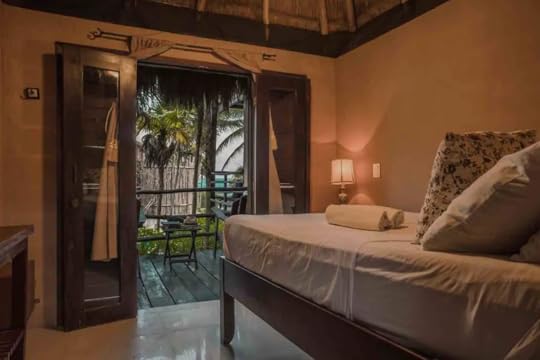 Photo: Airbnb
Photo: AirbnbSee more photosIf you have a small group of people or don’t want to be responsible for booking everyone’s lodging, consider booking a few Airbnbs in the same complex. And if you want a peaceful, more bohemian-style Tulum bachelorette party, Playa Esperanza is a great choice. It’s an eco-friendly beach club and hotel on the beach just a few steps from Mayan ruins within Tulum National Park.
Most rooms are built with natural materials and have a traditional open-air design, ensuring you can feel the ocean breeze year-round (though there are mosquito nets, of course). The eco-resort has electricity in the evenings only, since you don’t need it much during the day. There’s an on-site restaurant, swinging beach beds, bicycle rentals, an outdoor pool, a yoga space, and basically everything else you could need for a relaxing weekend. Good options at Playa Esperanza on Airbnb include a thatched-roof suite with a private terrace on the second floor, a jungle cabana with an outdoor shower, or a first-floor room with a private patio, each of which sleep two guests.
Two+ guests, one bedroom
Price: $150 per night
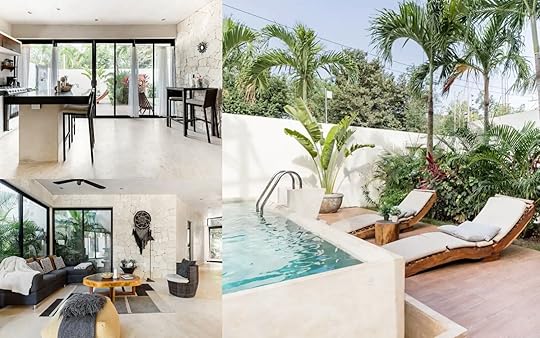
Photo: Airbnb
See more photosThe Grand Villa is perfect for midsized Tulum bachelorette parties as it sleeps a maximum of eight guests. It’s in Tulum town in a part of the city called La Veleta. It’s not a neighborhood built for tourists, but rather, a part of the actual town, with grocery stores, local restaurants, and affordable bars within walking distance.While it doesn’t have a full-sized pool, it does have an outdoor plunge pool, which allows more than a few people to sit on the edges and tip their toes in the water while enjoying a cold drink. Aside from the fantastic starting price, one of the best things about this Tulum bachelorette party Airbnb is the kitchen: or, more specifically, the fact that you don’t have to use it if you don’t want to. The host can arrange a private chef to prepare breakfasts, formal dinners, or anything in between.
Eight guests, four bedrooms
Price: $266 per night

Photo: Airbnb
See more photosYum Kaax translates to “goddess of the jungle,” which seems like an apt way to describe this gorgeous Airbnb in Tulum town. It’s a six-bedroom rental with a unique architectural blend that mixes a Mexican colonial house with the details of a Moroccan riad. It’s a unique property in a town when most new builds are in earth tones, cement, and glass. Considering how gorgeous it is, the low starting price is almost shocking.If you have any worries about visiting Tulum, you’ll be pleased to know that the home has an on-site security guide since it’s managed by a hotel company — but it’s in a walkable, residential neighborhood, anyway. The rooftop pool, arched doorways, and dark decor elements may make you feel like you’re in Marrakech, but when you see the first-floor gardens and lush surrounding palms, you’ll remember you’re in Mexico. Talk to the owner in advance if you’d like to add on chef services (or any other staff or concierge services) during your stay.
Fourteen guests, six bedrooms
Price: $468 per night
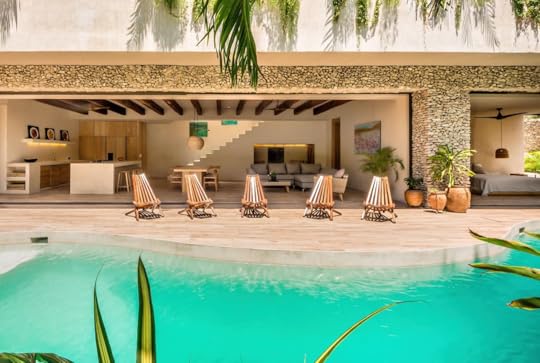 Photo: Airbnb
Photo: Airbnb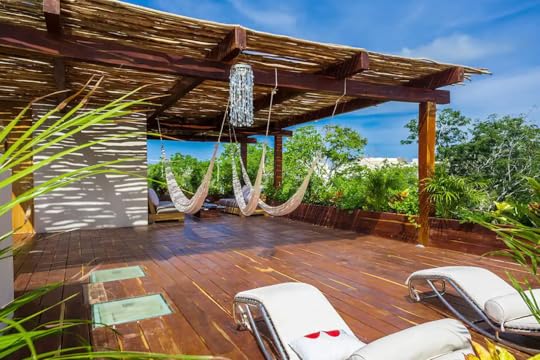 Photo: Airbnb
Photo: Airbnb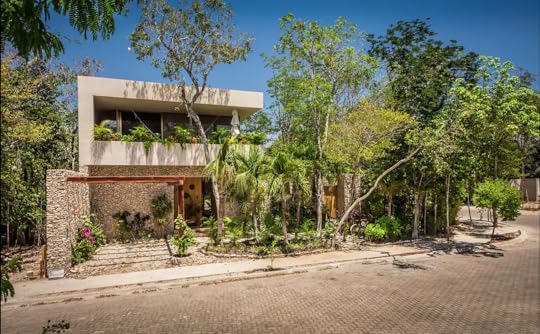 Photo: Airbnb
Photo: Airbnb Photo: Airbnb
Photo: AirbnbSee more photosIf you want your Tulum bachelorette party to be more on the peaceful side and plan to spend the days socializing at home with your besties, consider booking Villa Verde. It’s designed with relaxation in mind, with features like a pool surrounded by greenery, lots of outdoor loungers, and an outdoor area with woven hammocks. It’s a great property to book if you want to primarily hang at home, since there’s a movie projector and ambient lighting around the pool at night. Past reviewers note how helpful the owners are and say they went above and beyond to help them plan a special stay.
Nine guests, four bedrooms
Price: $495 per night

Photo: Airbnb
See more photosYes, one pool for your Tulum bachelorette party is good — but two is better. And that’s what you’ll get at Villa Meka, a four-bedroom private home in Tulum town. It’s in Tulum’s newly built Aldea Zama neighborhood, making it walkable to multiple bars and restaurants, outdoor açaí vendors and taco trucks, and plenty of low-key (or late-night) bars.Villa Meka has a large outdoor pool, plus a second on the rooftop, plus an outdoor living room with enough space to fit everyone. If you’re the bride booking your own accommodation, be sure to claim the first bedroom: it has a sliding glass wall that fully opens out onto the pool below.
Villa Meka’s host can help you arrange your transportation from the airport, group activities, dinner reservations, or anything else you need to make your Tulum bachelorette party one for the books.
Ten guests, four bedrooms
Price: $519

Photo: Airbnb
See more photosLarger Tulum bachelorette parties will fall in love with Villa Camila. It sits on the very edge of Tulum town and the owners say it takes about five minutes to reach the beach on a scooter. The house has a 20-person Jacuzzi tub, live trees growing through the home, and a modern cement-and-natural aesthetic that’ll make your bachelorette party photos look downright gorgeous.But the most compelling reason to rent Villa Camila for your Tulum bachelorette party is the rooftop. The owners hired the same artists who made the Azulik hotel property to create a rooftop oasis just for the home. On the roof, you’ll find a sundeck looking out over the jungle, a grill, a covered yoga area, and the aforementioned 20-person hot tub. There’s also a huge outdoor social area on the ground level, complete with rope swings dangling next to the pool bar (so yes, you can swing with your toes in the pool).
Sixteen+ guests, six bedrooms
Price: $689 per night

Photo: Airbnb
See more photosIf you want a Tulum bachelorette party Airbnb that feels like you rented a multi-million dollar mansion on the beach but doesn’t actually cost that, consider Villa Miramar. If you fill the place, it’ll only set each guest back around $100 a night — way less than a comparably luxurious hotel room. Villa Miramar exemplifies indoor/outdoor living, blurring the line between whether you’re indoors or not. The large living room has a sliding glass wall that fully opens onto an infinity pool overlooking the beach, and many of the social areas are between bedrooms, with roofs but otherwise open to nature.The rental includes daily maid service, plus a house manager who can assist with arranging anything you need. This Airbnb rental is on the beach near Tulum National Park, close to the Tulum Beach strip. Don’t hesitate to ask about having bike rentals waiting for you at the home, which should make it easy to get to bars and restaurants without ever needing a car.
Ten guests, five bedrooms
Price: $1,008 per night
Luxury jungle villa five minutes from the beach
 Photo: Airbnb
Photo: Airbnb Photo: Airbnb
Photo: Airbnb Photo: Airbnb
Photo: Airbnb Photo: Airbnb
Photo: AirbnbSee more photosThe host states this property is unlike anything else you’ll find in the area. And it certainly is one to bookmark. You’ll have all the amenities of a five-star hotel: a gym, underground parking, a heated Jacuzzi, yoga classes, housekeeping, and a concierge. And added extras like an in-house chef and security. The interior is simply stunning, with a rustic and chic design and carefully chosen artwork. Outside, the 13-meter pool is surrounded by lush greenery and has three waterfalls.
Eleven guests, five bedrooms
Price: $1,242 per night
 Photo: Airbnb
Photo: Airbnb Photo: Airbnb
Photo: Airbnb Photo: Airbnb
Photo: Airbnb Photo: Airbnb
Photo: AirbnbSee more photosLocated in the luxury development of Tulsayab in Tankah Bay, this oceanfront villa is about as opulent as you can get on Airbnb. The bay sits under seven miles north of Tulum, and unlike the packed hotel zones, Tankah Bay offers a rustic charm, perfect for those seeking a more relaxed getaway. The villa has three bedrooms, all with high ceilings and floor-to-ceiling glass doors and windows throughout the property offer stunning views of the bay. The rooftop has a bar and pool, which is where you want to be at sunset. The rental comes with onsite staff who can prepare lavish dinners and take care of housekeeping.
Six guests, three bedrooms
Price: $699 per night
 Photo: Airbnb
Photo: Airbnb Photo: Airbnb
Photo: Airbnb Photo: Airbnb
Photo: Airbnb Photo: Airbnb
Photo: AirbnbSee more photosYou’ll note by now that many of the Airbnbs in Tulum are staffed. This is a huge perk of having your bachelorette party in Mexico, as you can choose hotel-like services for a more elevated stay. This property has four bedrooms and can accommodate up to 10 guests. It sits directly on the beach in Tankah Bay. The chef is available to prepare all your meals from 8:00 AM to 8:00 PM, so you don’t have to worry about grocery shopping or cooking. Guests are responsible for the cost of groceries, typically billed at the end of the stay, and can range from $30 to $40 per person per day.
Ten guests, four bedrooms
Price: $1,000 per night
 Photo: Airbnb
Photo: Airbnb Photo: Airbnb
Photo: Airbnb Photo: Airbnb
Photo: Airbnb Photo: Airbnb
Photo: AirbnbSee more photosThis villa features five bedrooms in the main house, each with a king-size bed and a private bathroom. In addition, there’s a casita, a separate cottage that can be rented for extra privacy. The villa’s highlight is its expansive, open-concept living area that extends to the terrace, offering a generous space for socializing. While close to Tulum, this Airbnb is between Tankah Bay and Soliman Bay, offering a more secluded and tranquil vibe than the busier areas. This is great for a bachelorette group looking for a slower pace while still being close enough to Tulum’s attractions if you choose to venture out.
10 guests, five bedrooms
Price: $1,230 per night
 Photo: Airbnb
Photo: Airbnb Photo: Airbnb
Photo: Airbnb Photo: Airbnb
Photo: Airbnb Photo: Airbnb
Photo: AirbnbSee more photosThe villa sits directly on the beachfront in Tankah, providing stunning ocean views and easy access to the turquoise waters of the Caribbean Sea. This is another rental with extra perks such as a private chef and fun features like the private putting green. Whether you’re seasoned golfers or complete beginners, everyone will enjoy a round of golf with cocktails in hand. There’s also a heated in-ground pool surrounded by a lovely pool deck and tropical gardens.
Eight guests, three bedrooms
Price: $825 per night
 Photo: Airbnb
Photo: Airbnb Photo: Airbnb
Photo: Airbnb Photo: Airbnb
Photo: Airbnb Photo: Airbnb
Photo: AirbnbSee more photosTucked away in a gated community on Tulum’s beachfront, this Airbnb offers a secluded escape. This private residence allows you and your friends to celebrate in style. The dreamy infinity pool looks out onto the ocean, and there’s a “sky pool” on the roof with a glass bottom and a Jacuzzi perched on the rooftop terrace with panoramic views. The cenote Manati, a beautiful natural swimming hole, is also just a short walk from the villa. All in all, this is one of the most stylish Airbnbs in the area.
14 guests, four bedrooms
Price: $683 per night
 Photo: Airbnb
Photo: Airbnb Photo: Airbnb
Photo: Airbnb Photo: Airbnb
Photo: Airbnb Photo: Airbnb
Photo: AirbnbSee more photosThe major perk of this Airbnb for a bachelorette trip is the daily housekeeping service. This means you can spend less time cleaning up after yourselves and more time having a blast in Tulum. The villa is flooded with natural light, and each of the five bedrooms has an ensuite. The three bedrooms downstairs directly access the pool, creating a seamless indoor-outdoor living experience. The sixth suite has been designed for those traveling with a nanny. It has its own kitchen and would be suitable for anyone in the group who prefers a little more privacy.
Twelve guests, six bedrooms
Price: $683 per night
 Photo: Airbnb
Photo: Airbnb Photo: Airbnb
Photo: Airbnb Photo: Airbnb
Photo: Airbnb Photo: Airbnb
Photo: AirbnbSee more photosIf your budget allows, have a look at this epic house, which comes with a butler and chef. It also has eight bedrooms and a whopping ten and a half bathrooms. The chef can create a customized menu for your group, from gourmet meals to casual poolside fare. So, there is no need to worry about grocery shopping or meal planning, and you can focus on spending quality time with your friends. The butler service can handle everything from ensuring the villa is spotless to helping with any last-minute requests, providing a seamless and stress-free bachelorette.
Sixteen+ guests, eight bedrooms
Price: $1,950 per night
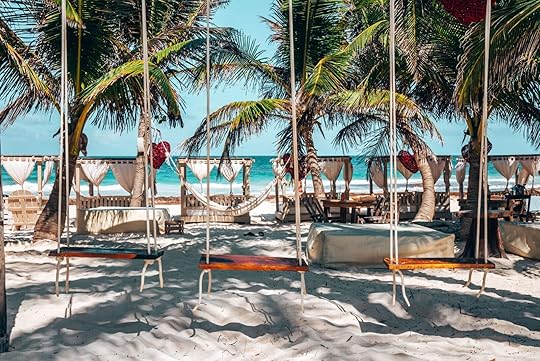
Photo: Ingus Kruklitis/Shutterstock
See more photosIf you have your heart set on a Cancun bachelorette party, look a little bit more into Tulum before booking your lodging. While Cancun is known for all-inclusive resorts, bars, beach clubs, and places to party, it doesn’t have a lot of variety beyond that. However, Tulum has plenty of places to party and drink, but it also has eco-beach clubs, yoga retreats, Mayan ruins, and places where you’re more likely to be surrounded by yogis on meditation retreats rather than American tourists posted up on beach chairs all day.A Tulum bachelorette party can be as wild or as tame as you’d like and also includes the option for cultural activities. However, Cancun is a little cheaper, at least for your standard all-inclusive chain beach hotels — luxury hotels in Cancun will probably cost just as much as those in Tulum. But if sitting on a beach and hitting buffets isn’t the vibe you’re going for, Tulum will probably be a better fit.
Is Tulum safe?
Photo: Alexandra Lande/Shutterstock
Tulum is generally considered to be a safe destination for tourists, but like any other tourist destination, it’s important to be aware of your surroundings and take basic safety precautions. You should exercise caution and be mindful of pickpocketing and other petty crimes, especially in tourist areas. It’s also recommended to avoid walking alone in isolated areas, especially after dark.
In recent years, Tulum has seen an increase in crime, including theft and robbery. There’s also been an uptick in violent crime; however, much is related to drug cartels. So as long as you avoid buying anything illegal (which you should, as that only increases the demand for a product that leads to violence), you should be fine. But of course, always use reputable taxi or transportation services and avoid the usual dumb behaviors that make you a target at night, like getting super drunk and walking home alone.
That said, tourism is essential to Tulum’s economy, and hundreds of reviews comment on how safe the Airbnbs felt and how they were great locations for everything from family reunions to 70th birthday parties. As as long as you use your head, you’ll be fine. A bigger concern may be getting stomach issues from the tap water, so unless you want to end your Tulum bachelorette party with a case of Montezuma’s Revenge, be sure to drink only filtered water (a bottle with a built-in filter could be a great gift for your party attendees!)
How do you get to Tulum, Mexico?
The closest international airport to Tulum is Cancun, so if you’re wondering how to get to Tulum, look for flights into Cancun. Fortunately, because Cancun is a popular destination for US travelers, there are direct flights from almost every major airport in the country. That makes it easy to reach for everyone, even if your guests are coming from across the country, and ensures that flight prices are relatively low. Cancun is the largest airport in Mexico and flights are frequent on multiple airlines.
From Cancun, it’s about an hour and a half to Tulum. Some of the higher-end Airbnbs can arrange transportation for your group, but otherwise, the best bet is to arrange a shuttle. Companies like Cancun Airport Transportation and Happy Shuttle Cancun offer private transfers to Tulum starting around $70 each way. 
May 11, 2024
How to Travel From the Southernmost Train Station in Europe to the Northernmost in the Fastest Way Possible

In Europe, the rail network is so extensive that you can cross several countries by train in the space of a day or less, hopscotching between capital cities. In a matters of hours, you can travel between London and Paris, Paris and Amsterdam, Amsterdam and Berlin, Berlin and Prague, and more. But how long and how difficult would it be to cross the European Union by train from its southernmost train station to its northernmost? The answer is: very long but not so difficult.
First let’s establish where the southernmost and the northernmost train stations in the EU are. Technically, the southernmost train station is Pozzallo in Sicily, Italy, but because Pozzallo is not on the mainland, and because the rail service to and from the coastal town has declined so much that it is nearly non-existent (trains are almost entirely replaced with buses), let’s consider the city of Algeciras in Spain to be the southernmost train stations in the EU.
Contrary to popular belief, the northernmost train station in the European Union is not Narvik in Norway because Norway is not part of the EU. The northernmost train station in the EU is located within the Arctic Circle in Vassijaure, Sweden. However, there is no current passenger train services to Vassijaure, so the next northernmost train station is the town Riksgränsen, which is really just next door to Vassijaure.
Because both Algeciras and Riksgränsen are not big rail hubs, and are, obviously, very far from each other, you can’t expect to get from one to the other in a flash. That said, the following itinerary, which includes four overnights, of which two are spent in trains, is one of the fastest, and most convenient way to make the trip by rail. (Note that this itinerary is evergreen and therefore does not include seasonal routes.)
Leg one: Spain (starting at $173)
Algeciras to Antequera-Santa Ana (Malaga)Antequera-Santa Ana (Malaga) to Madrid-Puerta De Atocha (by high-speed train AVE)Madrid-Puerta De Atocha to Barcelona Sants (by high-speed train AVE)Overnight in Barcelona in one of the city’s excellent Airbnbs or hotels.
Leg two: From Spain to Sweden (starting at $461.50)
Barcelona Sants to Paris Gare de Lyon (by high-speed train TGV INOUI)Paris Gare de l’Est to Frankfurt am Main Hbf (by high-speed train ICE)Frankfurt am Main Hbf to Hamburg (overnight high-speed train ICE)Hamburg to Copenhagen H (Eurocity train)Copenhagen to Stockholm (by high-speed train SJ)Overnight in Stockholm in one the city’s best airbnbs.
Leg three: Sweden (starting at $76.50)
Stockholm to Riksgränsen (overnight by sleeper train VY). Note that due to a derailment on the line, this leg will not be in service again until June 18, 2024.This train trip, while epic, would be exhausting and costly. That said, if you want a challenge, it is perfectly doable and will allow you to try out a huge variety of trains and train operators. While you can use RailEurope and Eurail to plan and book this journey, you’ll have to split it into segments. And if you’re the owner of a Eurail Global Pass, all the sections on this itinerary would be included. 
May 10, 2024
The 10 Best European Cities for Families, From a Toddler Mom on the Go

Embarking on a European adventure with a toddler might seem like a tall order. But trust me, as a frequent traveler and a toddler mama, I’ve figured out how to turn Europe into quite the playground. I moved to Copenhagen after marrying a Dane, and since then, our son Aksel and I have taken Europe by storm, debunking the idea that parenting clips your travel wings.
“We see more families with young kids inquiring about Europe now,” said Charlie Neville, marketing director of JayWay Travel, specializing in custom European tours. “Millennials are [having babies] and love to travel to off-the-beaten-path European destinations, so it makes sense they want to bring their babies along.” Yet, as a baby-making millennial myself, I’ve encountered my share of raised eyebrows when we travel with Aksel. Sure, traveling with a kid sounds like a dream — but a diaper-laden one most people don’t want to take on.
But that’s why I continually try to prove the naysayers wrong, showing that some destinations make traveling with a little one fairly easy. I’ve explored tons of cities with our toddler, and have my go-to list of the 10 best cities for a family trip to Europe. The best destinations for a family trip to Europe have plenty to do for kids, but also have enough history and culture to keep adults equally excited.
Travel’s not over, baby — it’s just getting started.
Lausanne, Switzerland
There are plenty of outdoorsy areas for kids to run amok in Lausanne. Photo: Anna Nahabed/Shutterstock
Lausanne is an underrated Swiss city that captures the essence of Swiss tranquility. With stunning views over Lake Geneva and a backdrop as appealing to kids as adults, the hour-long train ride from Geneva might be the most scenic journey you’ll ever take. And the cheese is fabulous everywhere you go.
What To Do: Plunge into the world of sports at the Olympic Museum, where interactive fun meets educational insight, potentially sparking a budding athletic passion in any youngsters. The town is very outdoorsy, with lots of room to wander through Lausanne’s cobblestoned old town or breathe the fresh Swiss air at multiple lakeside parks, perfect for letting children romp and parents relax. To extend your exploration, consider taking a family boat ride to Evian or Montreux, mixing effortless travel with breathtaking scenery. And if you’re visiting in early winter, the Christmas markets are a must.
Where to stay: Overlooking Lake Geneva, Lausanne Palace feels like a fairytale that caters to adults and children. The hotel’s rooms offer grand views, and on-site babysitting services allow parents to explore the spa or enjoy a quiet meal while the baby is in good hands. It’s definitely a splurge, but it’s near attractions like the Olympic Museum and the gorgeous lakeside promenades.
Florence, Italy
Photo: Ermolaev Alexander/Shuttertsock
Ah, Florence. It’s known for negronis and a rich cultural heritage (and gorgeous parks), but did you know it’s also a haven for traveling with children? Its compact layout is perfect for walking with a stroller, and every corner is steeped in history. And the Italian adore babies.
What To Do: Delight young minds at the Palazzo Vecchio’s children’s museum with interactive exhibits that breathe life into historical tales (that are equally captivating for adults). Along the whimsical paths of Boboli Gardens at the Uffizi Gallery, every fountain and statue invites childish imagination to run wild – and is a great place for kiddos to run wild, too. And don’t miss the Bardini Gardens, with a quieter pace and impromptu puppet shows.
Basing yourself around the family-friendly Oltrarno neighborhood is a good choice, with an artisan feel and plenty of stores showcasing traditional Florentine crafts. You’ll find plenty of quaint cafes to stop by for a gelato break (or a swift diaper change).
Where to stay: Sina Villa Medici is in Florence’s historical center and encapsulates the essence of Italian luxury and family-friendly convenience. After all, the Sina Hotels brand is still entirely family-owned and operated. Rooms are spacious, making them ideal for strollers and sprawled toys with extra room for modern comforts like in-room cribs. There’s a secure outdoor pool surrounded by lush gardens, so kids can splash about while adults indulge in some me-time at the spa or the hotel’s restaurants. It’s also close to many of Florence’s top family attractions, including the Palazzo Vecchio.
More Florence lodging recommendations:These Are the Most Stunning Historical Hotels in Florence, ItalyThese Florence, Italy, Airbnbs Put You Close to the Duomo and the Best of the CityThis Hotel in Florence Is Inside an Old MuseumThis Four Seasons Hotel Is Among Italy’s Poshest PropertiesTallinn, Estonia

Photo: Arcady/Shutterstock
Tallinn is another underrated capital that blends medieval charm with modern amenities. The city’s compact size makes it especially appealing for families with children, offering easy access to various activities. It somehow impeccably preserves its past while simultaneously looking forward.
What To Do: Visit Lennusadam (the Seaplane Harbour), where interactive maritime exhibits and a real submarine tour await eager explorers (and what toddler doesn’t love a submarine?) The Open Air Museum offers a glimpse into Estonian rural life with interactive reenactments. And at the expansive Kadriorg Park, you can let your kid run amok with hands-on learning at the Energy Discovery Centre, with more than 100 science-based activities.
Where to stay: Centrally located Kalev Spa Hotel is a play paradise for kids, and quite honestly, a relief for parents. The hotel has an on-site waterpark with slides and pools, perfect for entertaining children of all ages — and adults (those waterslides are something else). It’s also within easy walking distance of Tallinn’s charming Old Town.
Helsinki, Finland
Photo: Ekaterina Pokrovsky/Shutterstock
Helsinki stands out as a Nordic haven, with a similar vibe in ways to some of Scandinavia’s heavy-metal-music-love and-black-coffee-drinking cities. But it has a leg up for families, with modern design and child-friendly spaces. The city is vibrant and approachable, with various public spaces inviting playful exploration and healthy surroundings that ensure fresh air everywhere you go.
What To Do: Start with a whirl at Linnanmäki Amusement Park, followed by a deep dive into the marine world at the Sea Life Aquarium. For a dose of history and scenic beauty, ferry over to the fortress island of Suomenlinna, a UNESCO site that doubles as a perfect picnic spot.
Back on the mainland, the Design District and family workshops at the Design Museum are an ideal creative outlet for little hands, and a great way to burn some energy. Helsinki’s cuisine is diverse and caters to all tastes, with many restaurants offering child-friendly options and high chairs.
Where to stay: The Hotel Maria has a family-oriented approach to Nordic hospitality, set amid Finland’s stunning landscapes. Parents will appreciate the ability to genuinely relax, especially if you book a spa suite with a steam room or sauna to use while the baby is napping in the provided crib. If you book a babysitter for the night, you don’t need to go far for fine dining, as the onsite restaurant Lilja and the more understated Garden Terrace are highly rated. Fortunately, the latter is low key enough to bring the kiddos along. There are also lots of pretty Airbnbs throughout Helsinki.
Barcelona, Spain
Photo: Alliance Images/Shutterstock
With actual Spanish spice, Barcelona bursts with life and sensory overload, from the fantastical creations of Gaudí to the bustling marketplaces and sandy beaches. The Mediterranean getaway fills your (tapas) plate for parents and kiddos alike.
What To Do: Families should be sure to explore the fantastical Park Güell, where unconventional architect Antoni Gaudí‘s playful architectural styles will captivate young minds. The green expanse of Parc de la Ciutadella is home to the Barcelona Zoo, and Barceloneta Beach has plenty of child-friendly facilities. And if you’re feeling brave, consider getting lost in the Gothic Quarter (though you’ll probably want a baby carrier, rather than a stroller).
Where to stay: El Palace Hotel is a top choice for any traveler heading to Barcelona, but especially for families willing to splurge a bit while visiting the city. It’s in the chic Eixample district and close to major attractions. Many rooms connect, and hotel amenities great for kids include special children’s menus and safe garden areas for play. Cribs and babysitting services are available, and the upscale but still down-to-Earth ambiance is a great balanced for parents and children.
Dresden, Germany
More Barcelona lodging recommendations: The 7 Best Barcelona Hotels With Iconic Views Over the City Sleep as Close as You Can Get to La Sagrada Família by Staying at These 7 Barcelona Hotels
9 Fabulous Airbnbs in the Most Underrated Coastal Towns Near Barcelona
Stay Minutes Away From Gaudí’s Masterpiece at These Beautiful Airbnbs Near Park Güell

Photo: Irina Wilhauk/Shutterstock
Dresden may not be the first place you’d think of for a family trip to Europe, but the capital of Saxony is an excellent place for a relaxing family holiday. It mixes lush greenery with mid-century architecture entirely rebuilt post-WWII. It’s suitable for families looking for cultural immersion without the rush (or the prices) of larger European cities – and parents, the beer pours are quite generous.
What To Do: Adults and kids alike will love Zwinger Palace‘s grand architecture and interactive exhibits. The city’s renowned puppet theater is one of the biggest in the world and an ideal place to catch a magical performance, blending entertainment with rich narratives that fascinate children. Also worth a visit is the innovative German Hygiene Museum, where exhibits on health and the human body are presented in an interactive format suitable for curious young minds.
Where to stay: Facing Dresden’s Zwinger Palace, Residenz am Zwinger has luxurious apartments and studios that feel high end but are still comfortable for families. Helpfully, rooms fully equipped kitchens and expansive terraces, which are a great place for an outdoor stroller nap. It’s an ideal choice if you’re staying for longer than a few days, as it allows for easy home cooking and units have laundry facilities. It feels like a home away from home — well, if your home was near significant sites like the world-famous Semper Opera House and the Green Vault, that is.
Porto, Portugal
Photo: Rafael Bischof/Shutterstock
Just like Port wine and blue cheese, Porto’s coastal allure pairs deliciously with its deep-seated history, creating one of the best cities for a family trip to Europe on the western side of the continent. From its famed port wine cellars to panoramic river views and intimate historical streets, Porto has plenty of opportunities for family-friendly cultural immersion.
What To Do: Start your day with the babies with a panoramic tram ride along the Douro River on the Passeio Alegre/No. 1 line, capturing the essence of Porto’s historic districts. Families may want to dive into Portugal’s maritime history at the World of Discoveries, a sort of interactive theater where families ride boats through the colorful exhibits. (Information is suitable for all ages and available in multiple languages, including English). And for an unscheduled afternoon, relax in in the Ribeira district, where the vibrant street life and inevitable people-watching will entertain parents and kids.
Where to stay: Village by Boa is a contemporary “apartment hotel” perfect for traveling with kiddos, especially if there are multiple in the pack as units have more room than your average hotel. It has family-friendly amenities, including spacious suites with kitchenettes for preparing toddler meals or midnight snacks. The hotel’s central location makes it easy to visit attractions like the Porto Wine Cellars or take scenic strolls along the Douro River.
Venice, Italy
More Porto lodging recommendations: Stunning Hotels in Porto Close to Sights, Cellars, and Some of Portugal’s Best Beaches These Airbnbs Showcase the Best of Porto for Your Portugal Trip The Coolest Wine Hotels Around the World

Photo: Yating Kuo/Shutterstock
Venice is chaotic, but in the most picturesque way. It’s best enjoyed in the quieter months of low season, without cars and bikes (and relentless fanny pack-clad cruise ship guests). Don’t visit the “City of Water” in high season with a child, or your anxiety will skyrocket. Another tip: wear a BabyBjorn if your kiddo isn’t fully walking, as Venice, with all its staircase bridges, can be cumbersome with a stroller. However, Venice’s public transportation system is stroller-friendly, with most vaporetto (water taxi) stops equipped with ramps for easy access.
What To Do: Drift along the iconic canals on a vaporetto ride, giving your toddler a splashy perspective of Venice’s storied architecture. Explore the peaceful Lido for some beach time or discover the less-trodden charms of Cannaregio (one of the city’s northern neighborhoods) or the vibrant island of Burano, with its brightly colored houses. At the Giardini della Biennale (Biennale Gardens), interactive art installations make for a perfect family day. Leave plenty of time to stroll through local piazzas where the can kids mingle and play and parents can unwind with an Aperol spritz (after all, Venice is where the spritz cocktail was born).
Where to stay: Sina Centurion Palace on the city’s Grand Canal mixes Venetian Gothic allure with contemporary chic, with similar touches as its Florentine counterpart. The hotel has family-friendly offerings like spacious rooms, children’s meal options, and babysitting services. Unique to this location is a private dock, allowing families to hop on a gondola ride from the hotel’s doorstep (and without fighting crowds in the summers).
Amsterdam, Netherlands
More Venice lodging recommendations: These Luxury Hotels in Venice Let You Live Like a Local but Are Close to All Major Attractions The Best Airbnbs in Venice, From a Rialto Flat to a San Marco Studio This Apartment in Venice Is Right on the Grand Canal, and It’s Yours to Rent
This Venice Airbnb Has the Best Views of the Venetian Canal

Photo: MNStudio/Shutterstock
Amsterdam’s idyllic canals, vibrant street scenes, and forward-thinking architecture are a visual feast for everyone, including kids. Its landscape is interlaced with bike-friendly paths and bridges, creating an adventure for kids and a relaxed pace for parents to enjoy the more G-rated side of the city.
What To Do: Book tickets to the Van Gogh Museum with child-centric tours that turn art history into a vivid tale, as well as a museum-wide “treasure hunt.” On the family-focused canal boat tour, try to grab a window seat to offer kids a serene and engaging look at Amsterdam’s storied architecture. The city has plenty of food markets and child-friendly cafes, where Dutch culinary delights meet casual, cozy atmospheres perfect for family downtime and hot cocoa breaks.
Learning a few basic Dutch phrases, such as “dank u wel” (thank you) and “alstublieft” (please), can go a long way in making your interactions with locals more pleasant (and be fun for kids to practice).
Where to stay: The Andaz Amsterdam Prinsengracht Hotel is a superb choice for families visiting Amsterdam, blending imaginative design with family-friendly comforts and drawing inspiration from the whimsical world of Alice in Wonderland. The hotel is filled with playful and eclectic decor that captivates kids and adults, with spacious suites and garden-view rooms that can comfortably house three people. Larger families can ask about options for connecting rooms.
Edinburgh, Scotland
More Amsterdam lodging recommendations: Experience Amsterdam in Style at the Inntel Hotels Amsterdam Zaandam The Most Luxurious Amsterdam Hotels Close to All Major Must-See Sights This Breathtaking Canal House Hotel Is an Attainable Taste of Luxury in Central Amsterdam 11 Amsterdam Airbnbs in the City’s Coolest Neighborhoods

Photo: Sergii Figurnyi/Shutterstock
Edinburgh combines historical allure with child-friendly attractions, making it like Disney World, but without the Mickey Mouse-levels of anxiety and crowds. From its dramatic hilltop castles to intriguing underground tours, the city offers a captivating mix of history and adventure with lots of unique places for kids.
What To Do: When taking the tots to Edinburgh, begin the visit with a trip to Edinburgh Castle. Perched dramatically on an extinct volcanic crag, the castle provides a lesson in Scottish history. Be sure to ask for a kids’ scavenger hunt form at the entrance gate if your kiddos are running and reading already, as it gives the wee ones a kid-friendly way to stay engaged while visiting the large museum.
For outdoor fun, climb Arthur’s Seat, an ancient volcano, for another spectacular view of Edinburgh. The hike is manageable for families and provides a great way to burn off some energy. Families with slightly older (and braver) kids may want to book a daytime ghost tour of the city, with a more family-friendly approach than the evening tours that may be macabre enough to spook some adults.
Where to stay: Steps from Edinburgh’s Royal Mile, Fraser Suites are family-friendly, have kitchenette for easy meal prep, and are spacious enough to handle the hubbub of family life. Close to Edinburgh Castle and the National Museum of Scotland, it’s ideal for families looking to immerse themselves in Scotland’s rich history without breaking the bank. 
More like thisThe Ultimate European Bucket List Trip for Chocolate Lovers
More Edinburgh lodging recommendations: The 8 Best Hotels in Edinburgh Close to the Must-See Sights These are the best central Airbnbs in Edinburgh with views of Edinburgh Castle Top Airbnbs in Edinburgh in the Old City, New City, and Circus Lane
The top 13 Airbnbs for exploring the whole of Scotland
Matador Network's Blog
- Matador Network's profile
- 6 followers



